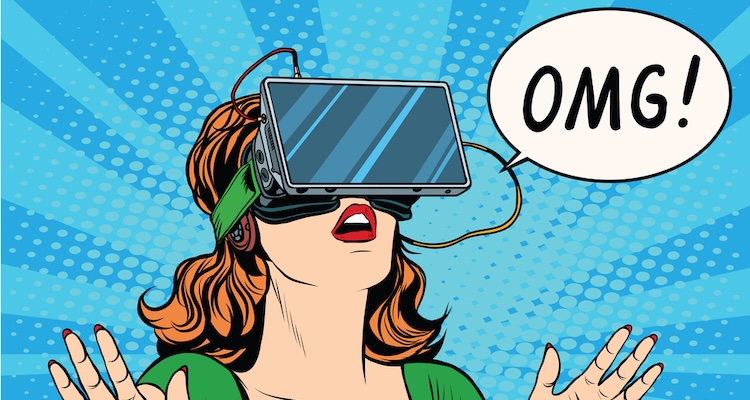2D to VR: How AI Will Give Adult Entertainment an Exciting New Dimension
Goodbye, clumsy, expensive stereoscopic cameras—hello, low-cost, higher-resolution experiences

A revolutionary way to create unprecedentedly immersive, sexually explicit virtual reality videos could be right around the corner, compliments of putting an imaginatively new spin on what now may appear to be a pretty standard technology.
Before getting to why this is so fascinating, let’s set the stage by quickly going over why it is currently so difficult, and not exactly cost-effective, to create virtual reality media. The thing about VR is that in order to make everything look as if the viewer is in the middle of the action, it takes not one but two, slightly offset perspectives—often done with a separate camera or a special lens arrangement.
Compared to usual, non-steroscopic productions, VR can be more trouble than it’s financially worth—even if VR adult content continues increasingly popular, with the industry expected to soon reach nearly 70 billion dollars according to this Demandsage estimate.
But what if there was a way to do everything that present virtual reality content creators can do. But at a fraction of the cost? Or also take any 2D video or a set of static images and transform them almost magically into a 3D, virtual experience?
Prest-O Change-O

The up and coming technology behind all this is already familiar to most of us. After all, it’s the same one that gives people a way to create an image or an entire movie with just a carefully worded prompt. Or, in the wrong hands, has led to an explosion of emotionally devastating, non-consensually produced deepfakes.
RECOMMENDED READ: Virtually Here: What VR Needs to Be All That It Can (Sexually) Be
Okay, enough dancing around the digital bush. It looks like we’ll soon be able to use AI image generation software to do what pricey VR filming hardware did, but far easier and cheaper.
NVIDIA Instant NeRFs already allows developers to create “a set of static 2D images into an immersive 3D scene in minutes.”
In case you’re curious, NeFR stands for “Neural Radiance Fields,” the process that enables Deep Neural Networks (DNNs) to realize multi-dimensional subjects from a series of two-dimensional samples.
Abracabra

While the adult entertainment industry hasn’t caught on to this technology’s erotic potential, more than likely, some as yet unnamed industry genius will have a lightbulb-over-their-head moment. When they do, everything could change like nothing before or since.
Let’s be honest, just as AI image-generating software can be used for positive or less-than-positive purposes, so too could NeFRs. Rather than dismissing the potential harm, I hope that by the time the adult entertainment industry recognizes its potential, we will also have a social and legal framework in place to prevent its abuse. In this context, NeFRs could be precisely what explicit VR content needs the most.
Lower costs, for example, might mean virtual reality may finally be able to meet its growing demand, with producers taking non-VR content and upgrading it to fully rendered, totally impressive experiences.
Alakazam

Why stop at making the old new again? We all know that AI can produce sometimes disturbingly realistic, but completely illusory, images and videos, so why shouldn’t it do the same with a couple of extra immersive dimensions?
But there’s still more fun on the horizon. Presently, there’s a respectable slew of adult videos embedded with sextech-connected codes so users can watch and feel at the same time.
Putting in those digital triggers is time and money-consuming, but the good news is that the same sort of work could be done by specialty-trained AIs—able to do what human developers can’t, to the tune of squeezing in a huge eye-popping range of new, sexually immersive possibilities.
AI image generation software may feel like we’ve done nothing but crack open Pandora’s box. Though unlike the myth, what comes out is ours alone to decide, so let’s not slam the lid shut out of fear but open it with our eyes wide open to how to use it creatively—and most of all responsibly.
Image Sources: Depositphotos

















